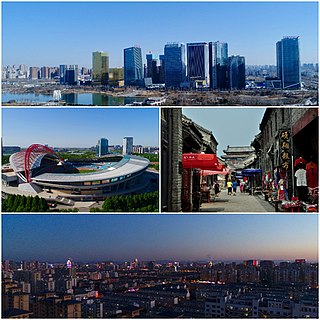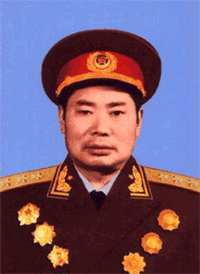Group armies or army groups or combined corps are corps-level military formations of the People's Liberation Army Ground Force of China.
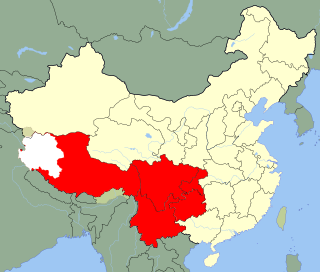
The Chengdu Military Region was one of seven military districts and is located in the southwest of the People's Republic of China, covering Chongqing, Sichuan, Yunnan, Guizhou, and the Xizang/Tibet Autonomous Region. It includes some of the area previously within the Kunming Military Region and has its headquarters in Chengdu. It was probably established in 1955.

The Guangzhou Military Region was from 1955 to 2016 one of the People's Liberation Army PLA Military Regions, located in the south of the People's Republic of China. In May 1949, the Central China Military Region (MR) was formed. In March 1955, it was divided into two, the Guangzhou MR and the Wuhan Military Region. When the Wuhan MR was disbanded in August 1985, its troops stationed around the Hubei province were assigned to the Guangzhou MR.

The Shenyang Military Region was one of seven military regions for the Chinese People's Liberation Army. It has command and control of military and armed police forces in the three northeast provinces of Jilin, Heilongjiang, and Liaoning, which also form Military Districts. This region is now superseded by the Northern Theater Command.
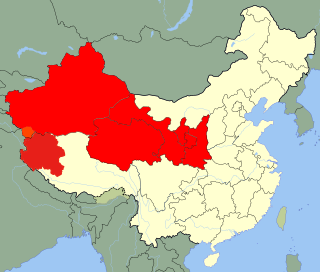
The Lanzhou Military Region was one of seven military regions in the People's Republic of China. It directed all military and armed police forces in Xinjiang, Qinghai, Gansu, Ningxia, and Shaanxi. The Ali area of northwest Tibet also falls under this Region. It is headquartered in Lanzhou in Gansu Province. It is bordered to the south by the Chengdu Military Region, and to the north by Mongolia, the Altai Republic, which is a political subdivision of the Russian Federation, and Kazakhstan. This region is now part of the Western Theater Command due to the military reforms of 2015.

The People's Liberation Army uses a system of theater commands, of which there are now five:
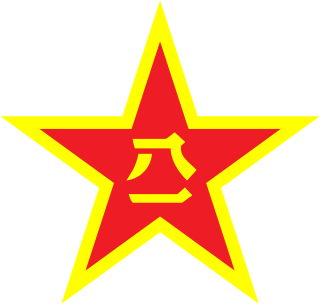
The 75th Group Army, formerly the 41st Group Army was one of two Group Armies assigned to the Southern Theatre Command.
The 82nd Group Army, formerly the 38th Group Army, is a military formation of China's People's Liberation Army and one of three active group armies belonging to the Beijing Military Region. It is based at Baoding, Hebei and is composed of an armored division, two mechanized infantry divisions, an artillery brigade, a mechanized air defense brigade and an aviation regiment in addition to various support and logistics units. Its unit ID number is 66393.
The 20th Group Army is a military formation of the People's Liberation Army Ground Force, stationed in the Jinan Military Region. It consists of two manoeuvre brigades with other attached or otherwise organic units. For some time after its formation in 1949, the army consisted of three divisions.
The 80th Group Army, formerly the 26th Group Army, is a military formation of the People's Liberation Army, seemingly originally formed in 1949. During the Korean War, it became part of the People's Volunteer Army of the IX Army Group, and was commanded by Lieutenant General Zhang Renchu.
The 4th Fighter Aviation Division is a unit of the Chinese People's Liberation Army Air Force (PLAAF). Initially established in 1950, it served in Korea under Commander Fang Ziyi and Commissar Ye Songsheng, flying Mikoyan-Gurevich MiG-15s. It ended its third combat tour in July 1953.

The 72nd Group Army, formerly 1st Group Army, is a military formation of China's People's Liberation Army. It is one of three active group armies belonging to the Eastern Theater Command. The army is based at Huzhou, Zhejiang and is composed of the 1st Amphibious Mechanized Infantry Division, an armored division, an artillery division, a motorized infantry brigade, an engineer regiment and an air defense brigade. It is considered a Category A unit, with priority status in terms of readiness, strength, and modern equipment.

The 71st Group Army, formerly the 12th (Group) Army, was one of the three group armies of the Chinese People's Liberation Army's Eastern Theater Command.

The 77th Group Army is a military formation of the People's Liberation Army Ground Force. It was established in 2017 by seemingly a redesignation of the former 13th Group Army.
The People's Liberation Army Air Force Airborne Corps is a corps directly under the People's Liberation Army Air Force (PLAAF) headquarters. It was reorganized and renamed from the 15th Airborne Corps in May 2017 and now comprises six airborne brigades and a special operations brigade. The PLAAF Airborne Corps is China's primary strategic airborne unit and part of the newly formed rapid reaction units (RRUs) of the Chinese military which is primarily designated for airborne and special operation missions. Its role is similar to that of the U.S. Army's XVIII Airborne Corps/82nd Airborne Division.
The 24th Group Army was a military formation of the People's Liberation Army. It was established in February 1949 and finally disbanded circa 2000-2003.
The 23rd Army was an army of the Chinese People's Liberation Army, active from 1949.


